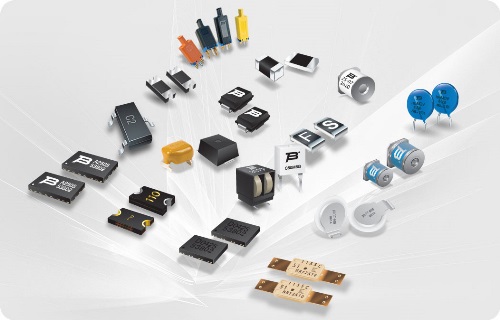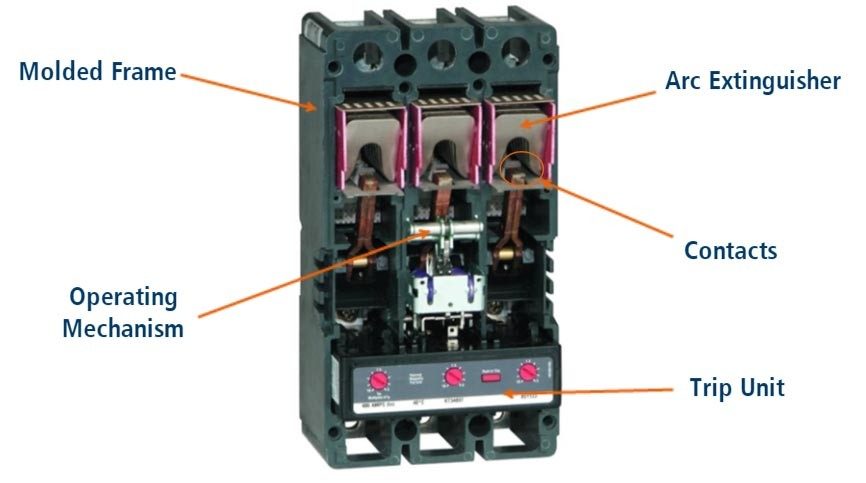April 19, 2023
2173
An electrical circuit breaker is an automatic switch that protects from damage caused by overloading, short circuit, or other electrical faults and can be found in homes, business and industrial facilities.

The simplest circuit protection device is the fuse. A fuse is just a thin wire, enclosed in a casing, that plugs into the circuit. When a circuit is closed, all charge flows through the fuse wire — the fuse experiences the same current as any other point along the circuit. The fuse is designed to disintegrate when it heats up above a certain level — if the current climbs too high, it burns up the wire. Destroying the fuse opens the circuit before the excess current can damage the building wiring.
The problem with fuses is they only work once. Every time you blow a fuse, you have to replace it with a new one. A circuit breaker does the same thing as a fuse — it opens a circuit as soon as current climbs to unsafe levels — but you can use it over and over again.
The circuit breaker is a fundamental device in today's world and one of the most significant safety measures in homes. Whenever the electrical wiring in a building experience an overcurrent, these simple machines halt the power supply until someone can rectify the problem. Without circuit breakers (or fuses), household electricity usage would be unfeasible due to the potential for fires and other chaos that could arise from minor wiring problems and equipment malfunctions.
Operating mechanism: Open and close the contacts of the breaker.
Contacts: Made of conductive materials and are held together by a spring, The contacts are responsible for carrying the current of the electrical circuit. The hot wire in the circuit connects to the two ends of the switch. When the switch is flipped to the on position, electricity can flow from the bottom terminal, through the electromagnet, up to the moving contact, across to the stationary contact and out to the upper terminal.
Tripping mechanism: Responsible for detecting electrical faults and tripping the breaker to interrupt the current flow.

When current flows through a circuit, it passes through the contacts of the circuit breaker.
When the current exceeds the rated limit, the electromagnet inside the circuit breaker is activated, which pulls down a metal lever that is connected to the contacts.
This causes the contacts to separate, breaking the circuit and stopping the flow of current.
Once the circuit is broken, the spring causes the contacts to return to their original position, allowing the circuit to be reconnected.
Classify the different types of circuit breaker
High Voltage Circuit Breakers: These circuit breakers are designed to handle voltage levels above 1000 volts. They are commonly used in power transmission systems to protect against overloads and short circuits.
Medium Voltage Circuit Breakers: These circuit breakers are designed to handle voltage levels between 1000 and 72 volts. They are commonly used in power distribution systems, such as in factories, buildings, and substations.
Low Voltage Circuit Breakers: These circuit breakers are designed to handle voltage levels below 1000 volts. They are commonly used in residential, commercial, and industrial applications, such as in homes, offices, and small factories.
Types | Examples | Features | Applications |
Low Voltage Circuit Breakers | Miniature Circuit Breakers (MCBs) | small and compact protect against damage to electrical devices Trip-free mechanism | Residential buildings Commercial buildings Renewable energy systems Telecommunications |
Molded Case Circuit Breakers (MCCBs) | Higher current ratings, up to a few thousand amps Long lifespan | Mining heavy industries | |
Air Circuit Breakers (ACBs) | Adjustable trip settings overcurrent protection | Marine offshore industries | |
Residual Current Circuit Breakers (RCCBs) | Sensitive protection against electrical shock and fires Detects ground faults and other current imbalances | industrial commercial industries | |
Ground Fault Circuit Interrupters (GFCIs) | Provides protection against electrical shock Senses leakage currents to ground | bathrooms, kitchens outdoor outlets | |
Medium Voltage Circuit Breakers | Vacuum Circuit Breaker (VCB) | High interrupting capacity Quick operation Environmentally friendly | Transportation systems Power generation |
SF6 Circuit Breaker | High dielectric strength Self-healing property | high power equipment motors | |
High Voltage Circuit Breakers | Oil circuit breakers | Efficient arc quenching Can be refilled | railways electric vehicles |